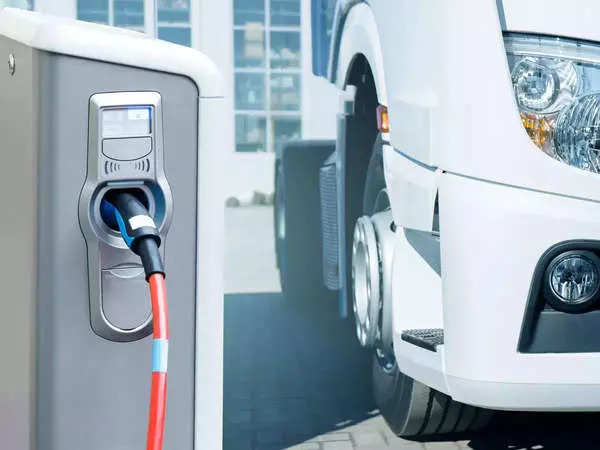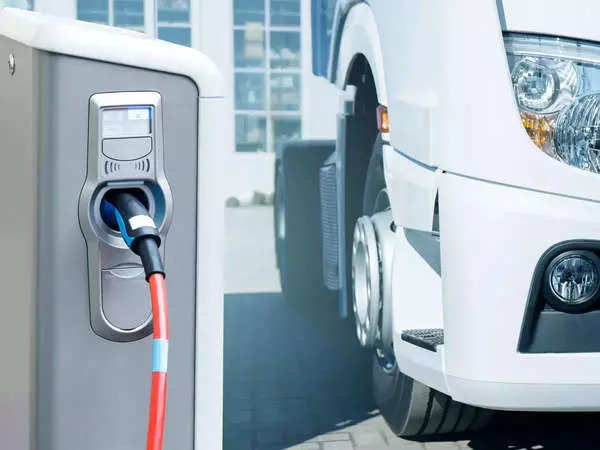
Next to the energy sector, the transport sector is emitting the highest GHG gases causing atmospheric temperature to rise. Electric vehicles (EVs) have been considered by every country to control the temperature increase by controlling GHG emission.
While there is a euphoria world over about EVs, few people know that EVs were in vogue in the 19th century itself. Annoys Jedlik, a Hungarian engineer, had made the first crude electric vehicle way back in 1828. His EV was a small scale model powered by an electric motor that was charged by a battery that could not be recharged.
Robert Anderson, a Scott, too, had made an electric carriage around the same time using a similar electric motor and non-chargeable battery. These were experimental EVs. It was in the late 19th century and the early 20th century that the commercial version of EVs took wing. It was the inventor, Thomas Parker from England, who had created practical EVs, those used for personal transportation during the 1880s.
The earlier golden era for EVs was the early 20th century when America’s 1/3rd vehicle on the road were EVs. Companies like Detroit Electric and Baker Electric were manufacturing such vehicles. Those days, Thomas Edison, the great inventor and founder of General Electric was one of the prominent users of EV. Only the rich living in urban areas used these vehicles as it was costly and could travel a limited distance.
The first oil well was drilled in Pennsylvania (USA) in 1859. The extracted oil was quite costly and its scaling up was taking a long time. By the turn of the century, ICE engine powered vehicles, invented in Europe, landed in America and started getting popular. Henry Ford’s assembly plant at Detroit (USA) made ICE powered vehicles affordable for the masses. Further, discovery of large sources of petroleum, dropping gasoline prices and construction of a large road network helped in popularising ICE powered vehicles.
Thus, EV’s popularity started declining, making EVs lose to ICE powered vehicles in the first round. Decline of EVs had started in the 1920s itself and by the 1930s, they had disappeared from the roads. ICE powered vehicles ruled the roost till the end of 20th century. However, the oil crisis of the 1970s had shocked the world and caused the nations to look for alternate sources of energy.
At the same time, first shoots of resistance to the use of fossil fuel started emanating from environmentalists. The fuel to fire was added by the Brudtland Commission Report – “Our Common Future” – that propounded the concept of “Sustainability.” The same was reinforced by Millennium Development Goals and later Sustainable Development Goals. Pursuing these SDGs, 195 countries have signed the Paris Accord (COP 21) in 2021 for climate control.
Since then, nations have been taking actions to bring down GHG emissions to control rise in temperature, ultimately contributing to Climate Action (SDG13). In this regard, many nations have decided to completely replace ICE powered vehicles.
Scooters India Limited, a Govt. of India Enterprise, located in Lucknow, was the first to develop, manufacture and sell Electric 3-wheelers during 1997-2002 when the author was the CEO of the company. Atal Bihari Vajpayee’s government had showcased this EV in his government’s achievement of 100 days in office. These EVs were named “Vikram EV.” Most of them were sold in Kathmandu under the “Save Himalayas” plan being implemented by a Swedish Agency. In India, the majority of them were running on Lucknow roads.
A few of them had replaced ‘Fatfat’ running between Connaught Place and Red Fort at the initiative of the then Chief Minister of Delhi, Ms. Sheela Dixit. This initiative was short-lived as charging became the main constraint in Delhi. Vikram EVs sustained longer in Lucknow where the plant was located which provided support in its operations; it lasted still longer in Kathmandu where the business model was built on battery exchange.
Later, Reva Electric Company, located in Bangalore, started making EVs (4-wheeler) on the basic design and prototype provided by ‘Amerigon,’ a technology development company based in USA. This prototype was earlier tested in Scooters India Limited whose R & D team had found it unsuitable for Indian roads and consumers.
In May, 2010, Mahindra & Mahindra acquired 55.2% shares of Reva Electric and named it Mahindra Reva Electric Vehicles Private Ltd. The strategic intent of the acquisition was to combine Mahindra’s manufacturing and marketing muscle with Reva’s technological brain. The next Indian Company to manufacture and market Electric Cars was Tata Motors which were exploring EV technology since the early 2000s. They had developed several prototypes and showcased concept electric vehicles at various auto shows. Meanwhile, some established and some new entrants started making electric 2 and 3 wheelers as well.
Globally, China leads the pack of EVs. 3.5 million EVs were sold in China in comparison to the USA’s 655,986 vehicles whereas India sold only 61,887 cars. No doubt, in India, the 2 wheeler (1246247) and 3 wheelers (493615) had seen a good growth; they constituted 95% of the sales. China’s leap was on account of government policy and a hold on battery raw materials, cell technology and required battery manufacturing machinery.
The USA’s push to EV was provided by Tesla Inc. which has its own battery manufacturing. Governments, world over, have been providing various incentives to promote EVs. In India, the FAME1, FAME2 and FAME3 incentives that being offered are second to none. Despite these incentives, the Indian EV manufacturers are struggling with battery cost and cell technology while customers find paucity of charging stations and if charging stations are found, it is either not working or doing improper charging.
It is obvious that in India, incentives alone will not work to meet the target of 30% EV sales by 2030 as the future of EVs will depend on technological innovations, especially battery technology. Sufficient investments have to be made for development of lithium mines discovered in J&K, lithium processing, cell manufacturing technology, electrolyte development with an objective of reducing costs, increasing energy density, and improving charging times. The expansion and improvement of charging infrastructure is very critical which is obvious from the failure of Vikram EV and Reva car.
The development of ultra-fast charging stations, capable of delivering over 500 km of range in a few minutes, will promote the sale as long-distance travellers, too, will turn to EVs. Yet another option is wireless charging technology – especially dynamic wireless charging – which will assure customers of EVs even during long haul. Of course, it will require upgrading of the roads.
All these require staunch support of the government with which EVs could account for more than half of global new car sales by 2040 (Bloomberg). This growth will be driven by declining battery costs, increased model availability, and greater consumer awareness of the environmental and economic benefits of EVs.






